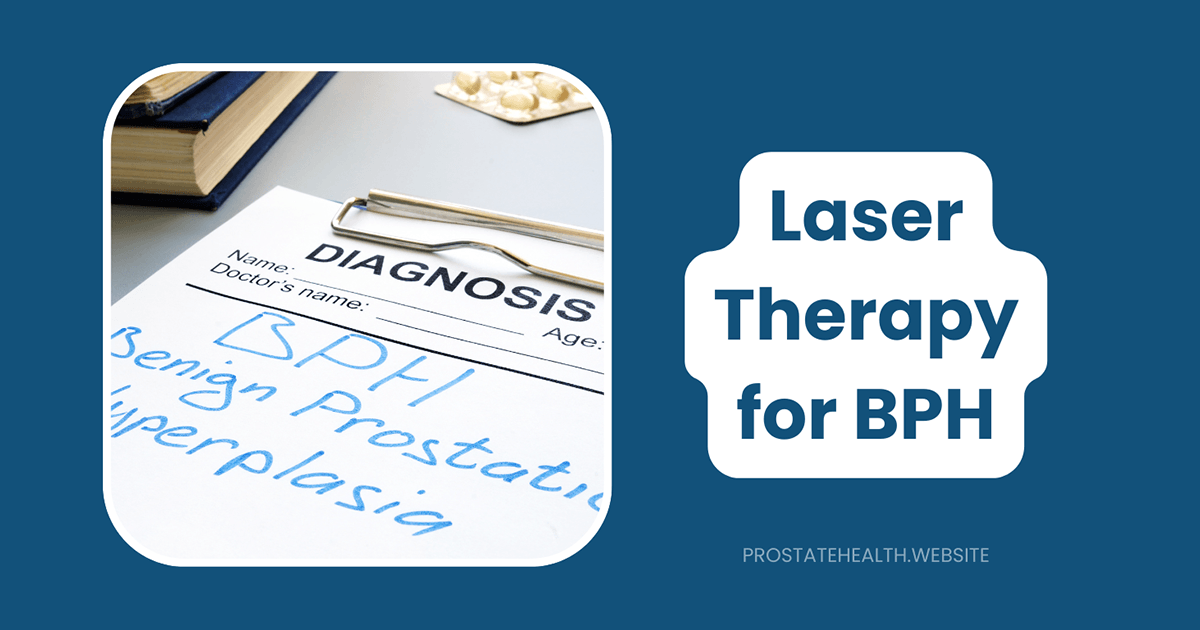Bone-Targeted Treatments for Metastatic Prostate Cancer: Protecting the Skeletal System and Extending Life

When prostate cancer spreads beyond its original site, it most commonly travels to the bones. This isn’t just a coincidence – there’s a biological affinity between prostate cancer cells and the bone microenvironment that makes this tissue a preferred destination for metastasis.
For men facing this challenging stage of disease, bone metastases can cause significant pain, increase fracture risk, and compromise quality of life. But there’s hope. Recent years have seen remarkable advances in bone-targeted treatments that not only address these complications but, in some cases, actually extend survival.
As someone who’s been following prostate cancer research closely, I’m excited to share these developments with you. Let’s explore the current landscape of bone-targeted treatments for metastatic prostate cancer and what new options are on the horizon for 2025 and beyond.
Understanding Bone Metastases in Prostate Cancer
Before diving into treatments, it’s important to understand what happens when prostate cancer spreads to bones.
The Prevalence and Impact
The statistics are sobering:
- Over 90% of men with lethal castration-resistant prostate cancer (CRPC) develop bone metastases
- The cumulative incidence of bone metastasis is 8% at one year and 17% at five years after diagnosis
- Bone is the primary site of metastasis in prostate cancer
When cancer invades the bone, it disrupts the normal balance between bone formation and breakdown. Prostate cancer typically causes “osteoblastic” lesions, where excessive bone formation occurs, but there’s also underlying bone destruction happening simultaneously.
Complications of Bone Metastases
Bone metastases can lead to several serious complications, collectively known as skeletal-related events (SREs):
- Bone pain: Often the first symptom, can be severe and debilitating
- Pathological fractures: Breaks that occur in weakened bones
- Spinal cord compression: A medical emergency requiring immediate treatment
- Need for surgery or radiation: To stabilize bones or relieve pain
- Hypercalcemia: Elevated calcium levels in the blood
These complications not only reduce quality of life but can also impact survival. That’s why effective bone-targeted treatments are so crucial.
FDA-Approved Bone-Targeted Treatments
Several bone-targeted treatments have received FDA approval for metastatic prostate cancer. Each works through different mechanisms and offers distinct benefits.
1. Radium-223 (Xofigo)
Mechanism: Radium-223 is a calcium-mimetic alpha-emitting radiopharmaceutical. It targets areas of increased bone turnover (like metastases) and delivers high-energy radiation that causes double-stranded DNA breaks in nearby cancer cells.
Evidence: The landmark ALSYMPCA trial demonstrated that Radium-223 not only addresses bone complications but actually improves survival:
- Overall survival: 14.9 months vs. 11.3 months with placebo (30% reduction in risk of death)
- Time to first symptomatic skeletal event: 15.6 months vs. 9.8 months with placebo
- Low rates of serious side effects: Minimal bone marrow suppression compared to other treatments
Administration: Intravenous injection of 55 kBq/kg body weight every 4 weeks for a total of 6 injections.
Best for: Men with symptomatic bone metastases from castration-resistant prostate cancer without known visceral metastases.
Limitations: Not recommended in combination with abiraterone acetate plus prednisone/prednisolone due to increased fracture risk observed in the ERA 223 trial.
2. Denosumab (Xgeva)
Mechanism: Denosumab is a fully human monoclonal antibody that targets RANKL (Receptor Activator of Nuclear Factor kappa-B Ligand), a key mediator of osteoclast formation and function. By inhibiting RANKL, denosumab reduces bone resorption and destruction.
Evidence: In head-to-head trials against zoledronic acid, denosumab showed:
- Delayed time to first SRE: 20.7 months vs. 17.1 months with zoledronic acid
- No improvement in overall survival
- Higher rates of hypocalcemia: 13% vs. 6% with zoledronic acid
Administration: 120 mg subcutaneous injection every 4 weeks.
Best for: Prevention of skeletal-related events in men with bone metastases from castration-resistant prostate cancer.
Limitations: Does not improve overall survival; requires careful monitoring of calcium levels and dental health.
3. Zoledronic Acid (Zometa)
Mechanism: Zoledronic acid is a nitrogen-containing bisphosphonate that inhibits osteoclast-mediated bone resorption by binding to bone mineral and inducing osteoclast apoptosis.
Evidence: The Zoledronic acid 039 trial showed:
- Reduced SREs: 33.2% of patients experienced SREs compared to 44.2% with placebo
- Delayed time to first SRE: Not reached vs. 321 days with placebo
- No improvement in overall survival
Administration: 4 mg intravenous infusion over 15 minutes every 3-4 weeks.
Best for: Prevention of skeletal-related events in men with bone metastases from castration-resistant prostate cancer, particularly when denosumab is not available or contraindicated.
Limitations: Requires renal function monitoring; risk of osteonecrosis of the jaw; flu-like symptoms after infusion.
4. 177Lu-PSMA-617 (Pluvicto)
Mechanism: This newer radiopharmaceutical targets the Prostate-Specific Membrane Antigen (PSMA) expressed on prostate cancer cells. It delivers beta radiation directly to PSMA-expressing cells, including those in bone metastases.
Evidence: The FDA expanded approval for Pluvicto in March 2025 based on the PSMAfore trial, which showed:
- Improved progression-free survival compared to a second androgen receptor pathway inhibitor
- Effective in patients with PSMA-positive metastatic castration-resistant prostate cancer
- Activity against both bone and soft tissue metastases
Administration: Intravenous injection every 6 weeks for a total of 4-6 doses.
Best for: Men with PSMA-positive metastatic castration-resistant prostate cancer who have progressed on androgen receptor pathway inhibitors.
Limitations: Requires PSMA-PET imaging to confirm eligibility; not effective in PSMA-negative disease.
Comparing Bone-Targeted Treatments: Which Is Right for You?
When considering bone-targeted treatments, several factors come into play:
| Treatment | Survival Benefit | SRE Prevention | Administration | Key Side Effects | Cost Considerations |
| Radium-223 | Yes (3.6 months) | Yes | IV, 6 treatments | Mild myelosuppression | $$$$$ |
| Denosumab | No | Yes (superior to zoledronic acid) | Subcutaneous, monthly | Hypocalcemia, ONJ | $$$$ |
| Zoledronic Acid | No | Yes | IV, monthly | Renal toxicity, ONJ, flu-like symptoms | $$ |
| 177Lu-PSMA-617 | Yes | Indirect effect | IV, 4-6 treatments | Dry mouth, nausea, fatigue | $$$$$ |
The choice between these options depends on several factors:
- Disease characteristics (symptomatic vs. asymptomatic, PSMA expression)
- Prior treatments
- Overall health and organ function
- Treatment goals (survival extension vs. quality of life)
- Logistical considerations (travel for treatments, etc.)
Emerging Bone-Targeted Treatments in 2025
The landscape of bone-targeted treatments continues to evolve, with several promising approaches in clinical development.
225Ac-J591: The Next Generation of Targeted Radiotherapy
One of the most exciting developments presented at the 2025 American Urologic Association Annual Meeting is 225Ac-J591, a PSMA-targeted alpha radionuclide therapy.
How it’s different: While 177Lu-PSMA-617 uses beta radiation, 225Ac-J591 delivers alpha particles, which have higher energy and shorter range, potentially causing more localized damage to cancer cells with less collateral impact.
Early results: In patients who had previously progressed on 177Lu-PSMA therapy:
- 41% achieved a PSA50 response (50% reduction in PSA)
- 8% achieved a PSA90 response
- Median progression-free survival was 3.7 months
- Median overall survival was 10.9 months
- Side effects were generally mild (Grade 1-2 nausea, dry mouth, and decreased appetite)
The CONVERGE-01 trial (NCT06549465) is currently underway to further evaluate this promising approach.
Combination Approaches
Researchers are exploring various combinations to enhance the effectiveness of bone-targeted treatments:
- Radium-223 + Immunotherapy: Early studies suggest potential synergy between radiation and immune checkpoint inhibitors.
- Radium-223 + Novel Hormonal Therapies: While the ERA 223 trial raised concerns about combining radium-223 with abiraterone, other combinations (e.g., with enzalutamide) are being studied with appropriate bone health measures.
- Sequencing Strategies: Determining the optimal order of treatments remains an active area of research, with some evidence suggesting that earlier use of bone-targeted therapies may provide greater benefit.
Novel Targets: Beyond Traditional Approaches
NXP800: This investigational drug targets the Heat Shock Factor 1 (HSF1) pathway, which is crucial for cancer cell survival under stress. While not specifically a bone-targeted therapy, recent research shows it may help address hormone-resistant prostate cancer, including bone metastases:
- In laboratory studies, NXP800 significantly slowed the growth of prostate cancer cells resistant to enzalutamide
- In mouse models, only 37.5% of tumors treated with NXP800 doubled in size within 38 days, compared to 100% of untreated tumors
- The drug has received Fast-Track and Orphan Drug Designation from the FDA
Clinical trials specifically for prostate cancer patients are being planned.
Optimizing Bone Health During Treatment
Beyond specific bone-targeted treatments, maintaining overall bone health is crucial for men with metastatic prostate cancer, especially those on androgen deprivation therapy (ADT).
The Impact of ADT on Bone Health
ADT, a cornerstone of treatment for advanced prostate cancer, significantly affects bone health:
- Approximately 50% of patients develop osteoporosis after 4 years of ADT
- This rises to 80% after 10 years
- Fracture risk increases significantly, even in areas without metastases
Supportive Measures for Bone Health
- Calcium and Vitamin D Supplementation:
- Calcium: 1200-1500 mg daily (diet plus supplements)
- Vitamin D: 800-1000 IU daily
- Regular monitoring of calcium levels, especially when on denosumab
- Weight-Bearing Exercise:
- Resistance training and weight-bearing exercises help maintain bone density
- Should be tailored to individual capabilities and metastatic burden
- Consider working with a physical therapist experienced in cancer care
- Bone Density Monitoring:
- Baseline DEXA scan before starting ADT
- Follow-up scans every 1-2 years
- Consider more frequent monitoring for high-risk patients
- Dental Health:
- Comprehensive dental exam before starting bone-targeted therapy
- Preventive dental work completed before treatment when possible
- Maintaining excellent oral hygiene during treatment
- Fall Prevention:
- Home safety assessment
- Balance training
- Appropriate assistive devices when needed
Making Treatment Decisions: A Patient-Centered Approach
Deciding on the right bone-targeted treatment requires a personalized approach. Here are key considerations to discuss with your healthcare team:
Questions to Ask Your Doctor
- About your specific situation:
- What is the extent and location of my bone metastases?
- Are my bone metastases causing symptoms?
- Do I have any visceral (soft tissue) metastases?
- What is my PSMA status based on imaging?
- About treatment options:
- Which bone-targeted treatment(s) do you recommend for me and why?
- What is the goal of this treatment (extending life, preventing complications, pain relief)?
- How will we know if the treatment is working?
- What side effects should I watch for?
- About practical considerations:
- How is the treatment administered and how often?
- Will my insurance cover this treatment?
- What supportive care will I need during treatment?
- Are there clinical trials I should consider?
Monitoring Treatment Response
Effective monitoring helps ensure you’re getting the maximum benefit from bone-targeted therapy:
- Regular imaging: Bone scans, CT scans, or MRIs to assess disease status
- PSA testing: While not always reliable for bone metastases, can help track overall disease activity
- Alkaline phosphatase levels: Often correlate with bone metastatic activity
- Pain assessments: Systematic tracking of pain levels and analgesic use
- Quality of life measures: Formal or informal assessment of how treatment affects daily functioning
Real Patient Experiences
Michael Rosenblum, a patient treated with 177Lu-PSMA-617 at Memorial Sloan Kettering Cancer Center, became disease-free after six doses and has maintained an undetectable PSA level five years later. While not every patient will have such dramatic results, stories like Michael’s highlight the potential of these newer targeted approaches.
Many men report that bone-targeted treatments not only help control their disease but also significantly improve quality of life by reducing pain and maintaining mobility – allowing them to continue enjoying meaningful activities with family and friends.
Looking Ahead: The Future of Bone-Targeted Therapy
The field continues to evolve rapidly, with several promising directions:
- More Personalized Treatment Selection: Using biomarkers and advanced imaging to match patients with the most effective bone-targeted therapy
- Novel Radiopharmaceuticals: Development of new targeted radiation delivery systems with improved efficacy and reduced side effects
- Combination Strategies: Optimizing the use of bone-targeted treatments alongside immunotherapy, hormonal therapy, and other systemic approaches
- Earlier Intervention: Moving effective bone-targeted treatments earlier in the disease course, potentially before symptoms develop
- Enhanced Supportive Care: Better management of side effects and complications to improve quality of life during treatment
Conclusion: Hope on the Horizon
For men with bone metastases from prostate cancer, today’s treatment landscape offers more options than ever before. From life-extending radiopharmaceuticals like Radium-223 and 177Lu-PSMA-617 to bone-protective agents like denosumab and zoledronic acid, these therapies can significantly improve both quantity and quality of life.
As research continues to advance, we can expect even more effective and targeted approaches in the coming years. The key is working closely with a knowledgeable healthcare team to select the right treatment at the right time, while maintaining overall bone health throughout the cancer journey.
If you’re facing bone metastases from prostate cancer, know that you’re not alone. Reach out to your healthcare team, connect with support groups like those offered by ZERO – The End of Prostate Cancer, and stay informed about emerging treatment options. With the right approach, many men are living longer, more active lives despite bone metastases.
Have you or a loved one experienced bone metastases from prostate cancer? What treatments have you found most helpful? Share your experience in the comments below to help others on this journey.






